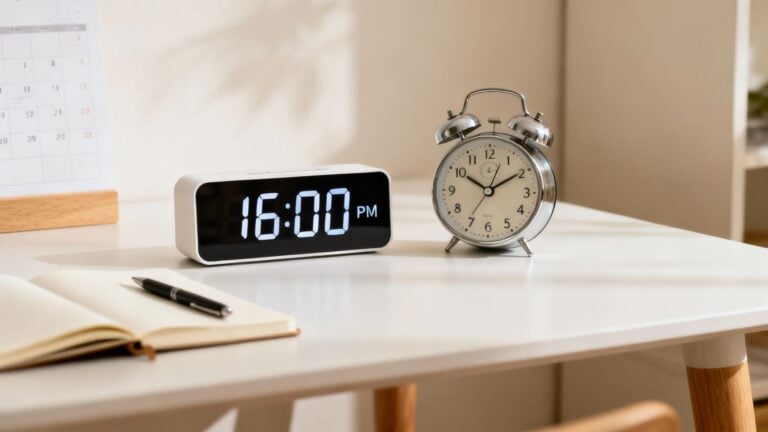Almost everybody can muster the courage for a brief burst of high-energy endeavor. Perhaps it’s creating a good first impression during your first few weeks on the job, going to the gym, or spending a weekend redecorating your room with all the enthusiasm of a motivational speaker.
However, what happens after the initial burst? Do you still feel the same about your new job, goal, or project a few months or even a year later? Have you given up on your dreams? Do you continue to push forward despite indicators of exhaustion or burnout? Or do you vacillate wildly between extreme productivity and accomplishing nothing?
The secret to success in business and most importantly in life is: not always to start strong; rather, it is to maintain a solid pace from start to finish. And one of the keys to long-term viability is the concept of self-regulation. This comprises functioning within predetermined lower and higher activity boundaries by setting the least and greatest amount of action you will perform toward a certain objective during a specified time period (such as a day or a week). This prevents you from becoming disoriented or losing interest, or from overdoing it and becoming too weary to continue.
Your body, mind, and spirit are like batteries. They only last for so long before they need to rest, recover, and recharge back to their full potential. Battery life restored! – Dr. Phillip C. McGraw
Energy is described as the force and vitality required to maintain physical or mental activity over an extended period of time. Work usually falls into one or both of those categories, depending on your line of work. When viewed in this light, energy is the vigor and vitality necessary for you to work.
Therefore, why do so many organizations and individuals place a premium on time and time management? If you had to meet every deadline despite your body and mind pleading for rest and recovery time, do you call that productivity?
What if you and your organization instead concentrated on energy management? Wouldn’t you meet the same deadlines with plenty of energy (and drive and spirit)? According to research, you would.
Indeed, one study highlighted the need of recharging energy levels in four distinct modules: mind, body, spirit, and emotions. They discovered that 68% of participants had a favorable effect on their client interactions. Another 71% reported a noticeable or significant improvement in their productivity and performance. Many of them surpassed their peers in sales and revenue—and did so for a year after the research concluded.
They concluded that good energy management enables a larger capacity to accomplish more in less time, with higher levels of engagement and long-term sustainability. Doesn’t that sound more like productivity?
Table of contents
4 Ways To Manage Your Energy More Effectively Throughout The Workday 📈
Set upper and lower boundaries🏹
Goal setting is a very popular concept, particularly at the start of the year. However, only a handful of people take the time to set out the measures they will take to accomplish their goals. And even fewer set daily upper and lower bounds for each of their goals. As a result, we see a large group of people giving up their goals within the first 2-3 months.
In Greg McKeown’s book Effortless, he suggests setting concrete boundaries for how little and how much work you will do on your critical priorities in a given day — for example, to meet sales targets, you may decide to make no fewer than five sales calls per day and no more than ten sales calls per day.
This can be used to any project or goal that you wish to complete. For instance, if you wish to write a book, you may decide to write for no less than 30 minutes per day and no more than three hours per day in order to avoid burnout. Alternatively, you may decide to exercise no fewer than three times per week and no more than five times per week to ensure that you get a sufficient workout while still having time for other responsibilities such as family time or personal tasks.
If you struggle in setting goals and boundaries check out our blog on Timeboxing where we suggested different tips and techniques on goal setting. Click here.
Get To Know How You Work🏢
Are you a worker who thrives on last-minute crunch time? Do you take on too much and find it difficult to say no? Or do you work steadily and slowly on a project? Consider this for a moment. Acquaint yourself with the work you do and how you do it.
For those with a high level of energy, take frequent breaks to avoid burnout and keep an eye on your maximal energy capacity. For those with lesser energy expenditures, establish daily minimal expectations for yourself and ensure that you do not go below them.
If your energy levels fluctuate throughout the day, keep an eye out for both the bottom and top of your energy limits as they arrive and go. Take breaks, yet push yourself to complete activities when you’re motivated. Remember pushing yourself and forcing yourself are two very different things.
Build-in rest and recovery🛌
As humans, we are wired for activity and rest cycles. That is why we sleep at night, why weekends are critical components of a good work week, and why even the best athletes cannot exercise every waking hour.
If you’re a high-drive individual, you’ll need to be more vigilant about scheduling time for rest and recovery.
“I make certain that my personal time is not as crammed as my work time.”- Elizabeth Grace Saunders, Founder and CEO of Real Life E”
“For me, this entails considering my time away from work not simply as a method of completing personal activities, but also as a source of rest. For example, two mornings a week, I skip my usual 5:15 a.m. wakeup for swimming. Rather than that, I allow myself time to reflect on life, read intriguing articles, or simply sleep in. I also intentionally set aside time on weekends and evenings to interact with individuals without regard for time constraints — simply going with the flow and allowing things to unfold naturally”, said Elizabeth in an interview with HRB.
If you operate at a low-drive level, ensure that you have reached your lower activity barrier before taking a break. This means that you can still take frequent breaks, but only after achieving a goal.
And if your drive swings, you’ll need to remember to take time for relaxation and recovery on days when you feel on top of the world and capable of working 24 hours a day to avoid collapsing the following day. This could include simple things like eating regularly, getting up from your chair and stretching or walking, and not staying up ridiculously late – regardless of how energized, you feel. Compel yourself to stop when it is a decent time for you to go to bed, so that you may restart the next day with a clean slate.
Managing Your Energy Means Listening To Your Body🙋♀️
Your mind, body, spirit, and emotions all possess a great deal of intelligence than you realize. They’ll inform you of their requirements and when they’ll require them. You are responsible for listening. Mediation is an excellent approach to reconnect with your body’s messages, in case you’ve forgotten or gotten used to ignoring the symptoms and stuffing feelings. Additionally, gratitude journals are excellent tools for bringing more happiness into your life and releasing negativity.
Throughout the day, make an effort to accomplish at least a few activities that actually bring you joy. For instance, if you only had a year to live, how would you spend it? How do you get inspired? How would you maximize the value of each day? How would you manage your energy if it were your responsibility? Are you willing to take additional breaks? Increase your strolling time? Increase your work that inspires you, fuels your creativity, and cultivates your mindfulness?
Summary
Before you go back to your work, think about how you wish to be remembered in your professional life.
As the pessimistic, exhausted, and stressed-out employee, who is usually too busy to take a long lunch break or attend a midday yoga class? Most likely not. Most likely, you want to be remembered as the upbeat, pleasant, creative employee who consistently completed things on time and still found time for mindful moments throughout the day.
So, ask yourself: What’s stopping you from doing or being that right now?



